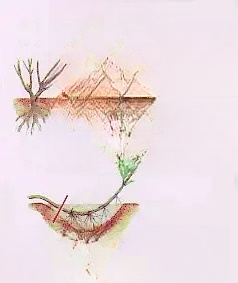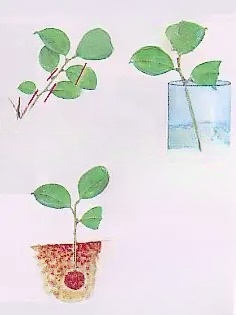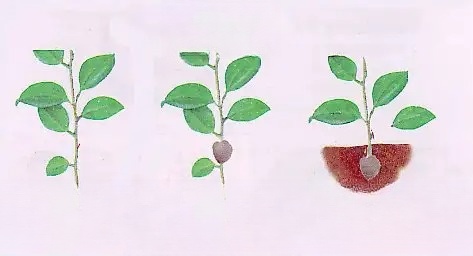How do plants reproduce?
|
|
|
| | As the saying goes, "you reap what you sow." These melons and beans are planted with seeds. But in this world, there are many |
| | Plants don't have seeds, so how do they reproduce? |
| | The main methods of plant reproduction are: seed reproduction, spore reproduction, reproduction without seeds... |
| | 1. Seed propagation |
| | The most common plants are those that reproduce by seeds, and these plants mainly include: gymnosperms and angiosperms. |
| | 1. Seeds hidden in the fruit |
| | The fruit is wrapped around the seed to protect the seed's growth. Some fruits have only one seed, which we often call a hard core. Some fruits have many seeds, which are mixed in the juicy flesh. Fruits with hard cores include mangoes, peaches, avocados, etc. Fruits without hard cores include pomegranates, kiwis, etc. |
| |
|
| |
|
| | 2. Who do seeds spread on? |
| | In order for a seed to become a new plant, it must fall into a suitable place for growth. Dandelion seeds need the help of the wind to blow them to the soil far away; squirrels love to eat acorns, and often hide the acorns they collect underground. Later, they forget about it, and the acorns underground will grow into small oak trees; |
| | In the soil far away; squirrels love to eat acorns, and often hide the acorns they collect underground. Later, they forget about them, and the acorns underground will grow into small oak trees; the fruits of some plants are sweet and beautiful. After the birds eat them, the outer flesh is digested, but the seeds inside remain intact and are finally excreted with the bird droppings. |
| | The fruits of some plants are sweet and beautiful. After the birds eat them, the outer flesh is digested, but the seeds inside remain intact and are finally excreted with the bird feces. In this way, the seeds are spread wherever the birds fly. There are also some plants whose seeds are covered with hooks on the surface, which can easily stick to animals. In this way, when these seeds fall from the animals, they have been carried to far away places. |
| | Various ways plants spread fruit seeds In nature, each plant has its own way of spreading its offspring. Some rely on the wind to spread their fruits and seeds, while others rely on water, animals, or their own power to spread their fruits and seeds. The seeds of some plants are so light that air currents can carry them away. For example, Orobancha, a herbaceous plant of the Orobancha family, is native to subtropical and temperate zones. One plant can produce hundreds of thousands of seeds. Moreover, its seeds are very small, with each seed weighing no more than one thousandth of a milligram, as small as dust. The seeds of orchids are also very small, and a slight breeze can blow them far away. If they fall into a moist place, they can germinate. No wonder in the tropical forests of Hainan, you can see orchids growing on the trunks or thick branches of tall trees. These plants grow from seeds spread by wind. 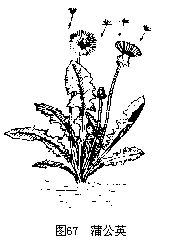
The fruits or seeds of some plants have structures that are adapted to be spread by wind. For example, the seeds of lilies and tulips are in the form of thin flakes, and they float in the wind like gliders. The fruits of catalpa and catalpa have wing-like protrusions, like double-winged propellers. The fruits of dandelions have a circle of white pappus on their heads, and when the wind blows, they fly around like parachutes and can be blown very far. The Stipa on the grassland is also a plant that spreads its fruits by wind. The fruit awns of Stipa are long and have long feathers on the top, which can be blown high and far by the wind. When the wind stops, it can also make the fruit fall vertically to the ground like a parachute, and the fruit can be driven into the soil by the force of the rotation of the fruit awn to facilitate germination. 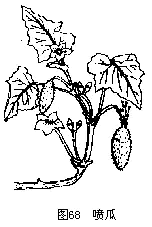
For example, elm and maple trees spread their fruits by wind. Masson pine, kapok and willow trees spread their seeds by wind. These phenomena can be seen everywhere. Some aquatic plants spread their fruits and seeds through water. Their fruits or seeds have a low specific gravity and can float on the water surface and be carried to distant places by water currents. Water lilies are beautiful ornamental plants. They have large fruits with black seeds inside. The outer seed coat of the seeds forms a circle of air sacs, which wrap around the seeds like a life buoy. When the water lily fruit matures, it sinks into the water first, until the peel rots away, and then the seeds float to the surface of the water with the "life buoy" formed by the air sacs, and float around on the water surface until the air in the air sacs gradually disappears or rots away, and then they sink into the mud at the bottom of the water, and then germinate and take root. The fruit of the lotus is called a lotus pod, which is filled with air and has loose tissue. It floats on the water and spreads its seeds everywhere. There are also many plants that rely on animals to spread their fruits and seeds. For example, the fruits of Bidens pilosa, Xanthium sibiricum, and Bamboo grass have sharp hooks or thorns on them, which can easily attach to animals or people's clothes to help them spread. There are also many plants that rely on the delicious flesh of the fruit, which animals rely on for survival. When animals eat the fruit, they inadvertently spread the seeds for them, such as peaches, plums, banyan trees, guavas, etc. Some plants eject their seeds by their own power, such as Impatiens and mung beans, whose fruits automatically split open when ripe, ejecting the seeds far away. But the most interesting is the squirting melon, which grows in southern Europe. Its fruit is shaped like a cucumber. When its seeds mature, the tissues that contain the seeds turn into a sticky liquid, which exerts great pressure on the peel. When the fruit stalk falls off or due to external force, the fruit of the squirting melon is like a soda bottle with the cork uncorked, and the seeds inside the fruit and the mucus are ejected together, with a range of up to 6 meters. It spreads its seeds by its own power. |
| |
|
| | 2. Spore reproduction |
| | Spore reproduction does not require seeds, but relies on very tiny spores to reproduce offspring. This type of plant mainly includes: algae, fungi, lichens, mosses and ferns. Fungi do not use seeds to reproduce offspring, but rely on very tiny spores. For example, the round and big puffballs will release spores that look like dust. When the leaves of ferns first grow out, they are always tightly rolled up. When it grows up, many small brown dots will appear on the back of the leaves, which look like countless insect eggs. In fact, they contain spores that continue its life. |
|
|
|
| |
|
| |
|
| |
|
| | 3. No need for seed propagation |
| | Some plants can reproduce by their roots and stems. Plants that reproduce by roots include tulips, etc. Tulips can grow new plants from underground bulbs. Plants that reproduce by stems include strawberries, cassava, irises, onions, etc. Iris can grow seedlings from underground stems every year. This kind of root stem is called a rhizome. Strawberry stems can extend in all directions. Wherever they extend, they will take root and grow into a strawberry plant. Cassava has many tubers that can sprout and become a plant.
Chlorophytum will sprout young plants at the top of its stem. If you take these young plants off and stick them into the soil, they will slowly grow roots. Some plants are even more interesting. If you put a leaf of it into the soil, it will also grow a plant. This is called leaf cutting propagation. Cut a few ivy branches, put them in water, and wait for them to grow roots before planting them in the soil. If you divide a plant with its roots and plant it in the soil, it can also survive. This is called division. Some plants have a large bunch of roots under their stems. We can cut them with a knife and plant them separately, so that one plant can become several plants. |
| | 4. Other reproduction methods |
| | Plants that reproduce by leaves
Everyone knows that plants reproduce by seeds or cuttings. For example, when planting rice or wheat, rice seeds or wheat seeds must be sown, and when planting sweet potatoes, vines must be cut. However, there are also some species in the plant kingdom that reproduce by leaves! Most plants that reproduce by leaves are succulent plants. The branches and leaves of succulent plants are thick and store a lot of water. It is a way for plants to adapt to drought in tropical areas. 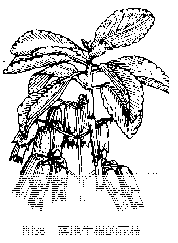
The most typical example is the radiata. It is a perennial herb with opposite leaves, simple or compound, elliptical or ovate, 5 to 10 cm long, and dozens of blunt serrated notches on the edges of the leaves. If we pick a leaf and put it on the ground or put it in a book, after a few days, we can see that several roots and a bud grow on each notch on the leaf edge, and each bud can grow into a plant later. For example, potted ornamental plants such as jade lotus, pink lotus, and begonia can also be propagated by leaves. The leaves of jade lotus are elliptical and obovate, about 2.5 cm long, without petioles. If you pick the leaves and put them on the ground, 1 to 3 buds will grow at the base of the leaves after a few days, followed by roots, and gradually grow into new plants. There is also a plant called pointed-leaf bromeliad, which looks similar to the bromeliad, but its leaves are more pointed and have purple linear spots on them. When its leaves grow on the branches, buds grow on the edges of the leaves. When the buds fall to the ground, they quickly take root and grow into a small plant. 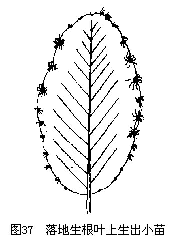
When the above-mentioned succulent plants are propagated by leaves, as long as the soil is properly moist and not too dry, the leaves can be placed on the ground for propagation. If they are inserted too deep into the soil or watered too much, the leaves and buds will rot. This is because these plants used to grow on rocks, and their ancestors' genetic characteristics of preferring drought and not being able to tolerate water and humidity have been preserved to this day. 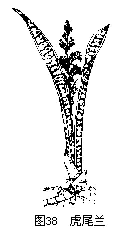
Tiger tail orchid is a shorter plant that looks like sisal. It is a common flower in Guangzhou and can also be propagated by leaves. There are two common tiger tail orchids, one is tiger tail orchid and the other is golden edge tiger tail orchid. The leaves of tiger tail orchid are hard and fibrous, sword-shaped, with light green and dark green stripes, about 40 cm long and 5 cm wide, with sharp thorns on the top of the leaves. It usually propagates with buds on underground rhizomes, so it often grows in clumps. However, if it is artificially propagated by leaves, the leaves can be cut into small sections about 10 cm long, inserted about halfway into the soil, and maintained with proper moisture. After about half a month, it will take root and sprout and grow into a new plant. The appearance of golden edge tiger tail orchid is very similar to tiger tail orchid, but the edge of the leaves is surrounded by a golden yellow edge about 3 mm wide, so it is called golden edge tiger tail orchid. We have propagated golden edge tiger tail orchid by leaf insertion according to the above method, and the seedlings grown from it do not have golden edges, that is, the golden edge tiger tail orchid becomes tiger tail orchid. The experimental results were recorded in the book "Flora of Guangzhou" edited by the South China Botanical Institute of the Academy of Sciences. 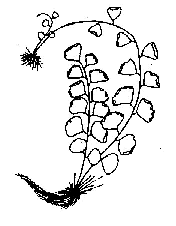
Some ferns also have the characteristic of using leaves to reproduce, and their reproduction methods are also very special. For example, the maidenhair fern likes to grow at the foot of limestone or in the cracks of the wall. Its leaves are pinnately compound leaves, and the top of the leaf axis is often extended into a whip shape. When the top of the leaf touches the rock or wall, it can naturally produce fine roots, firmly attached to the rock or rotten wall, and then sprout to form a new plant. If the leaves of the mother plant are not dead, seedlings will grow on the tip of the leaves of the new plant. We only need to pull out one of them to pull out several plants. This is another way for plants to reproduce with leaves. This plant can often be seen on the ruins of abandoned houses in the countryside of Guangdong. |
| | With the development of science, there are more methods of plant reproduction. For example, grafting, tissue culture seedlings, genetic modification, cloning... Although we humans have learned many methods of plant reproduction today, in the era of rapid development of science and technology, people will definitely invent more advanced reproduction methods to benefit mankind and create tomorrow. It requires the efforts of our generation. |
|
|
|
| | Propagation of flowers by division For example, Nandina, Bamboo Palm, Areca Palm, Fishtail Palm, Pearl Orchid, orchid, etc., small buds often sprout at the base of the plant to form small plants with complete roots, stems, and leaves. As long as it is separated from the mother plant, it will become a new plant. Propagation of flower bulbs For example, gladiolus, freesia, amaryllis, lily, etc., after one year of cultivation, the base of the bulb will produce small bulbs. These bulbs can be separated and cultivated together to form new plants. In about three Vegetative propagation of plants The root propagation of sweet potatoes, the tuber propagation of potatoes, the stem propagation of geraniums, the root propagation of dandelions, and the leaf propagation of begonias are all vegetative propagation. Vegetative propagation is possible because the vegetative organs separated from the mother body have the ability to regenerate, and can grow adventitious roots and adventitious buds on the separated parts, thus developing into new plants that can live independently. In production, for some plant species that cannot produce seeds or produce invalid seeds, such as bananas, figs, citrus, grapes, etc., artificial vegetative propagation often becomes the main propagation measure. In order to preserve the excellent strains of plants or create new varieties, people often use various artificial vegetative propagation measures. |
| | Viviparous reproductive behavior Seed plants reproduce by seeds, and some can also reproduce by roots, stems, and leaves, which are already familiar to people. In fact, there are many plants that can reproduce by giving birth to live young like mammals. Mangroves grow on the mudflats of tropical and subtropical coastal streams and rivers. They bloom twice, in spring and autumn, and the fruits are hung upside down on the outstretched branches. When the tender green buds of the saplings emerge from the fruits, the fruits still grow on the mother tree and do not fall off. The saplings absorb nutrients from the mother tree in the fruits like a fetus, and when they grow to 30cm, they leave the mother body. Since the mangrove seedlings do not grow from the ground, but grow up by absorbing nutrients from the fruits of the mother tree, some biologists call mangroves viviparous plants. In China, plants such as the white bone tree of the Verbenaceae family, the silver leaf tree of the Sterculiaceae family, the sea mango of the Viburnum family, and the yellow hibiscus of the Malvaceae family can reproduce viviparously. |
| | |
| | |
| |
|
|
